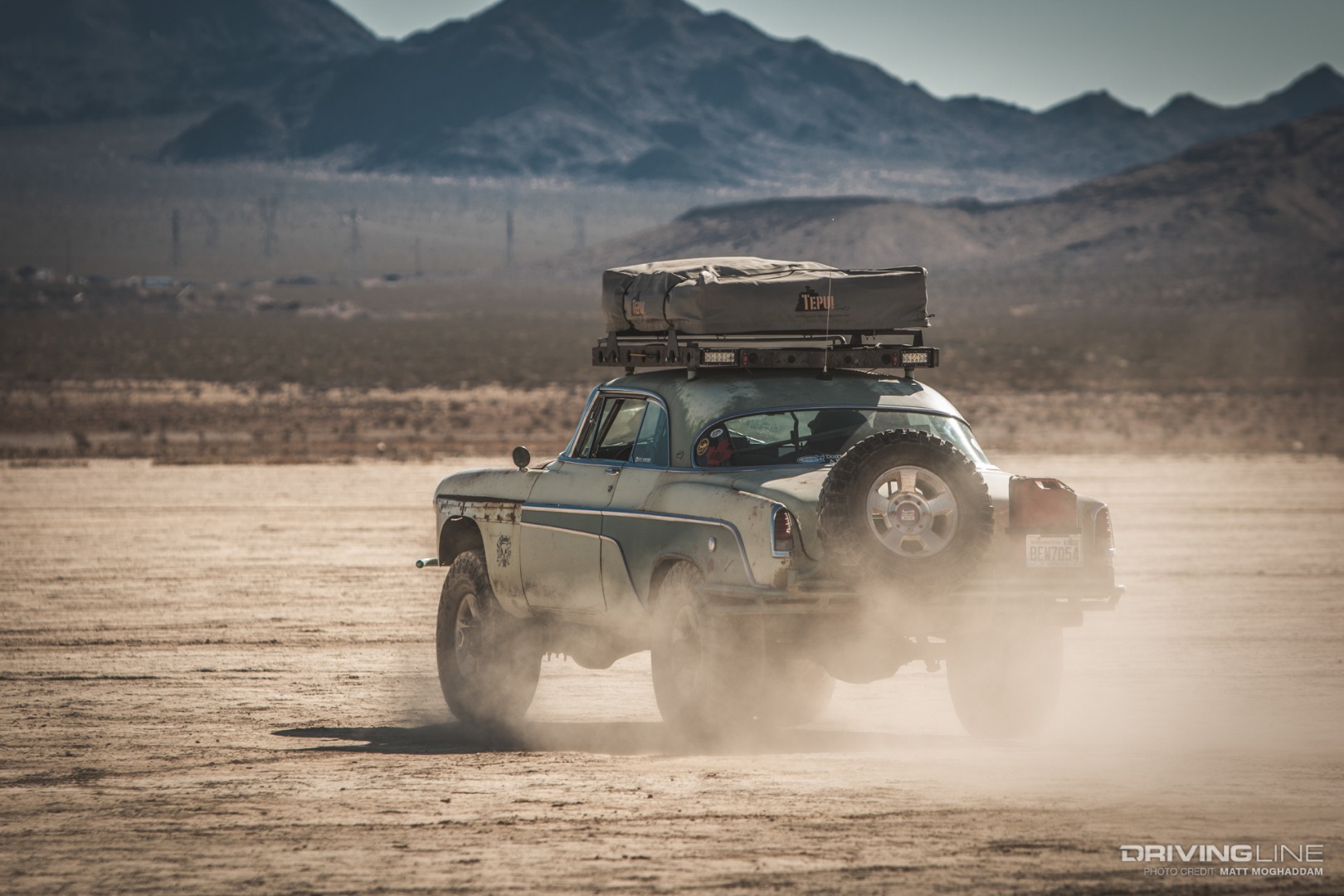In a world of fully-built overland Toyotas, SEMA trucks, hot rods with five-figure paint jobs and record-setting performance machines, the breath of fresh automotive air can sometimes come from an unlikely place. As true enthusiasts of all things strange, unique, hand-crafted and insanely cool, we constantly have a weather eye on the horizon for such vehicles that simply should never have been. Builds that lurk in the shadows, hiding away quietly on the fringe of what is accepted as normal in the automotive society. We seek out these monsters, not to ridicule or pass judgement on them, but to usher them into the spotlight and share with the world the product of imaginative vision and true innovation. But no creation we have found to date has awoken such a primitive sense of adventure in our caveman car-geek hearts as “The Chupacabra.”
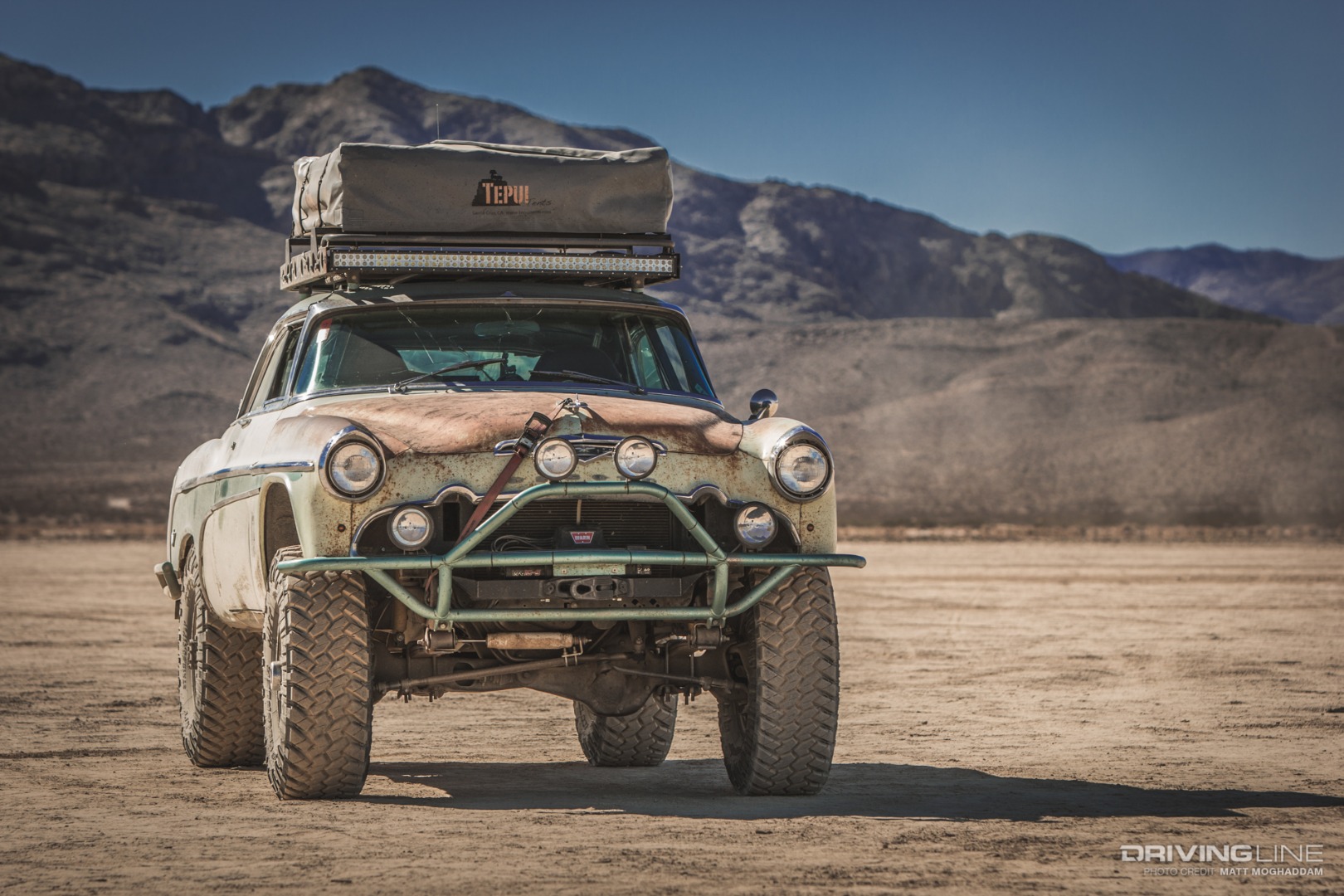
Behind every unique masterpiece is a mad scientist who harbors the creativity and resources to bring their wildest imaginations to life. Dave Mackey is the owner of Blue Dog Garage, a hot rod shop in Marysville, Washington dedicated to restoring and fabricating the relics of yesteryear. In early 2017, Dave found a 1955 DeSoto Firedome on his local Craigslist. One of Dave’s shop employees needed the Hemi V8 from the DeSoto for another hot rod project, thus rendering the rest of the rusted out coupe useless. That is, until his sister in-law told him about the Gambler 500 Rally, and suddenly, that old snow-covered DeSoto took the shape of an interesting opportunity.
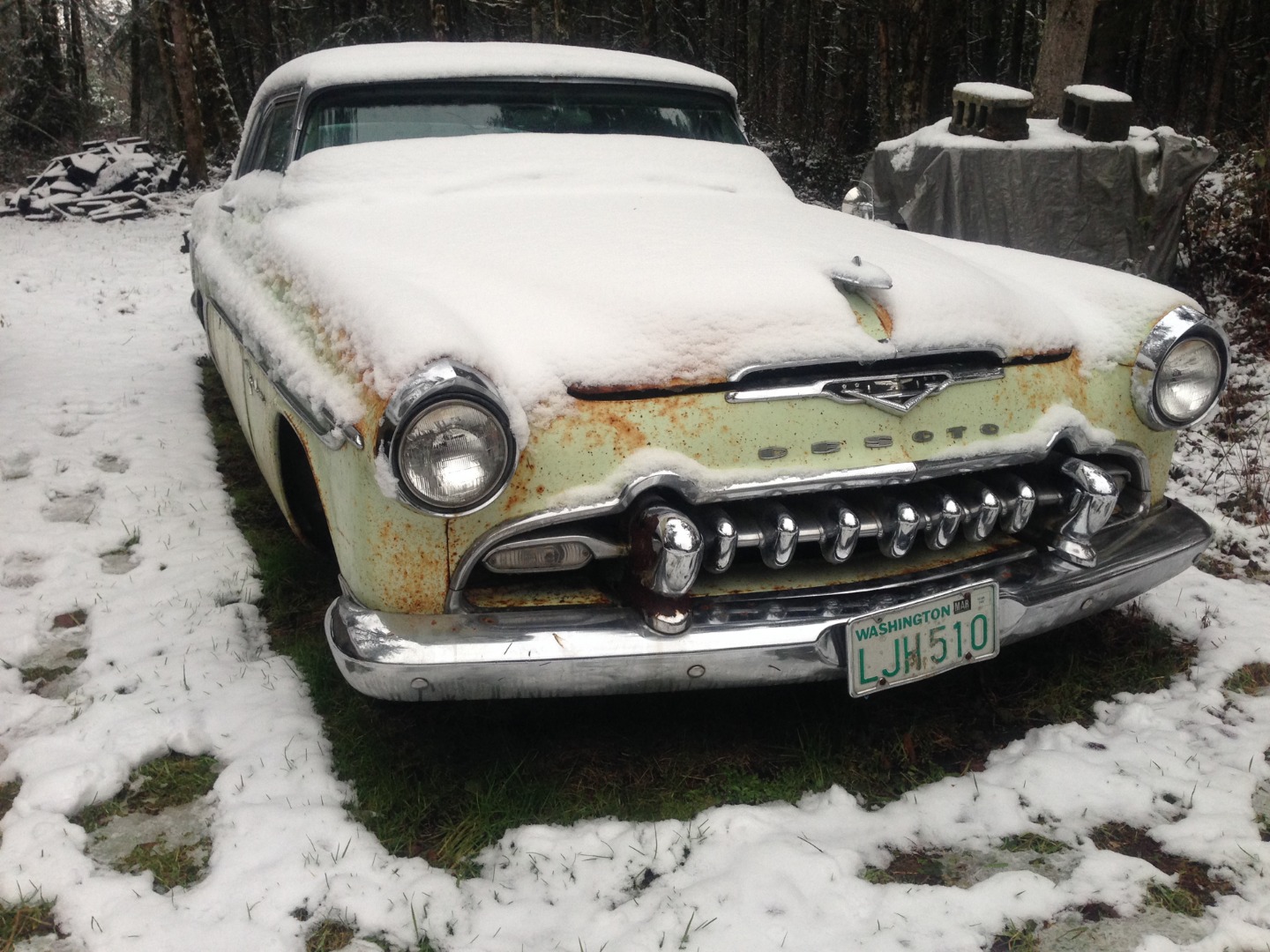
The Gambler 500 is a rally series that takes place in local chapters all over the country, bringing people from all walks of life, from amateurs to professional drivers, together in a self-described “impractical off-road navigation adventure challenge.” The only real rule is that you must be driving something of low monetary value, in obscure mechanical shape, making the rally all the more entertaining and challenging. When Dave found his local Gambler 500 group in the Pacific Northwest, he knew just what to do with that old DeSoto sitting at his shop.

A friend of Dave’s told him about an old 1986 Ford F-250 4x4 for sale just down the road from his shop, and the wheels in Dave’s mind began turning. The DeSoto wouldn’t cost him anything since he already had it laying around. Without hesitation, Dave brought the Ford truck home, putting him a whopping $275 out of pocket. The big block 460 V8 in the truck suffered a carburetor fire, which is why Dave got it for so cheap, but a new carburetor and some TLC got the Ford running without issue. Next came the fun part. Figuring out how to get the DeSoto body onto the F-250 chassis.

This called for some good old-fashioned fabrication work. With help from his wife and neighbor, Dave was able to strip down the truck to its bare chassis, giving him a better idea how much modification the chassis needed to accept the earlier DeSoto body. The F-250 was an extended-cab long bed, which meant the frame needed to be shortened 30 inches to match the DeSoto’s wheelbase. Dave cut out a 30-inch section just forward of the rear leaf-spring hangers, then extended the rear of the frame by 13 inches to adequately mount the rear of the DeSoto body.
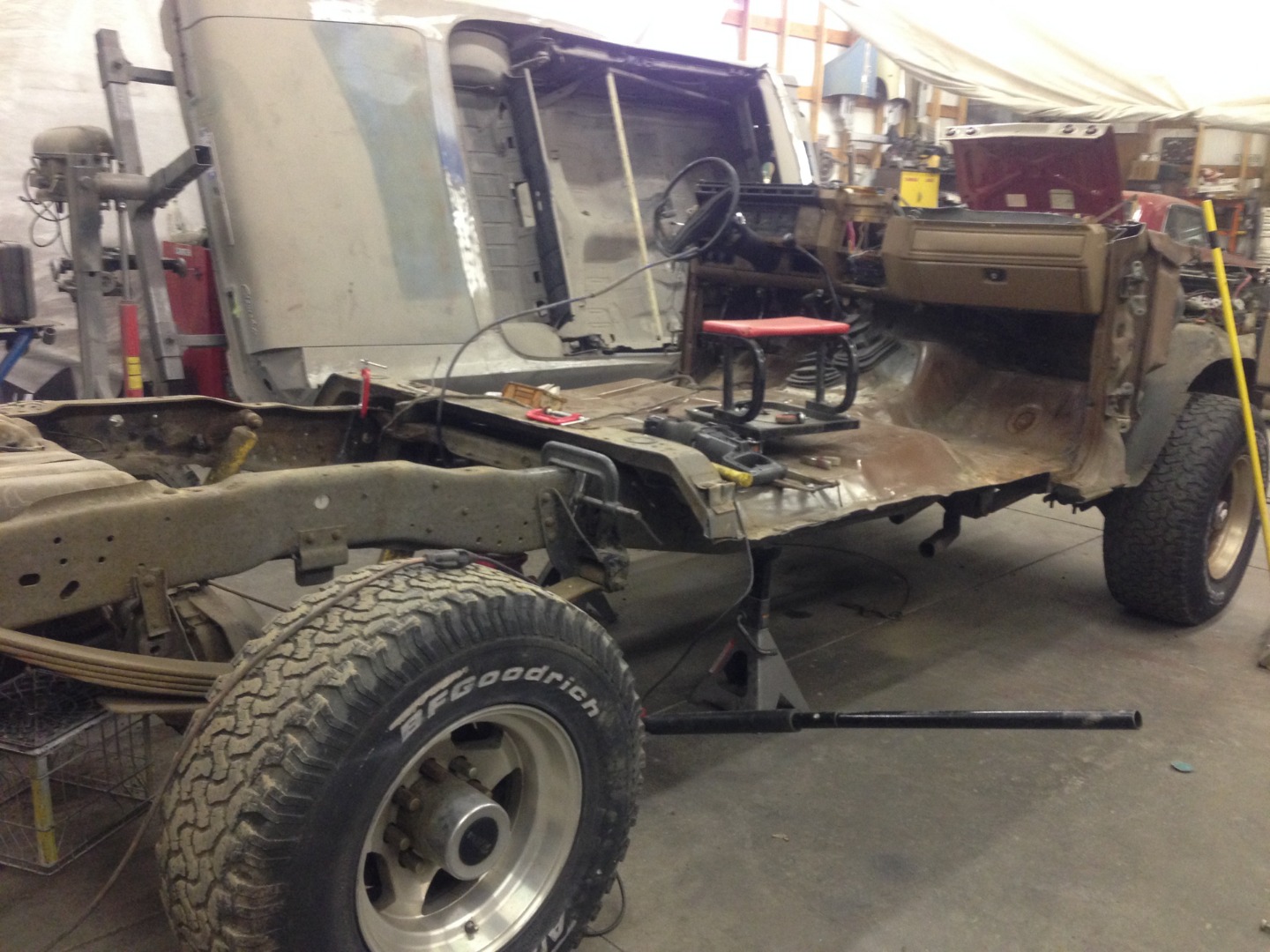
Some other alterations were required to make the Desoto body fit. In order to make things work easier, Dave reused the Ford’s firewall, steering column, pedal assembly and wiring harness. The truck’s firewall was too far forward in relation to the DeSoto’s, so Dave moved the Ford body mounts six inches back to make up for it. He also built some custom rocker panels to mount the floor panels to. Instead of fabricating a trunk space from scratch, Dave utilized the factory Ford F250 bed, cutting it down to fit the trunk of the DeSoto, also allowing for the stock F250 gas tank to be utilized. The steering shaft was modified to fit correctly, and Dave welded the firewall in place to the frame after the final fit.
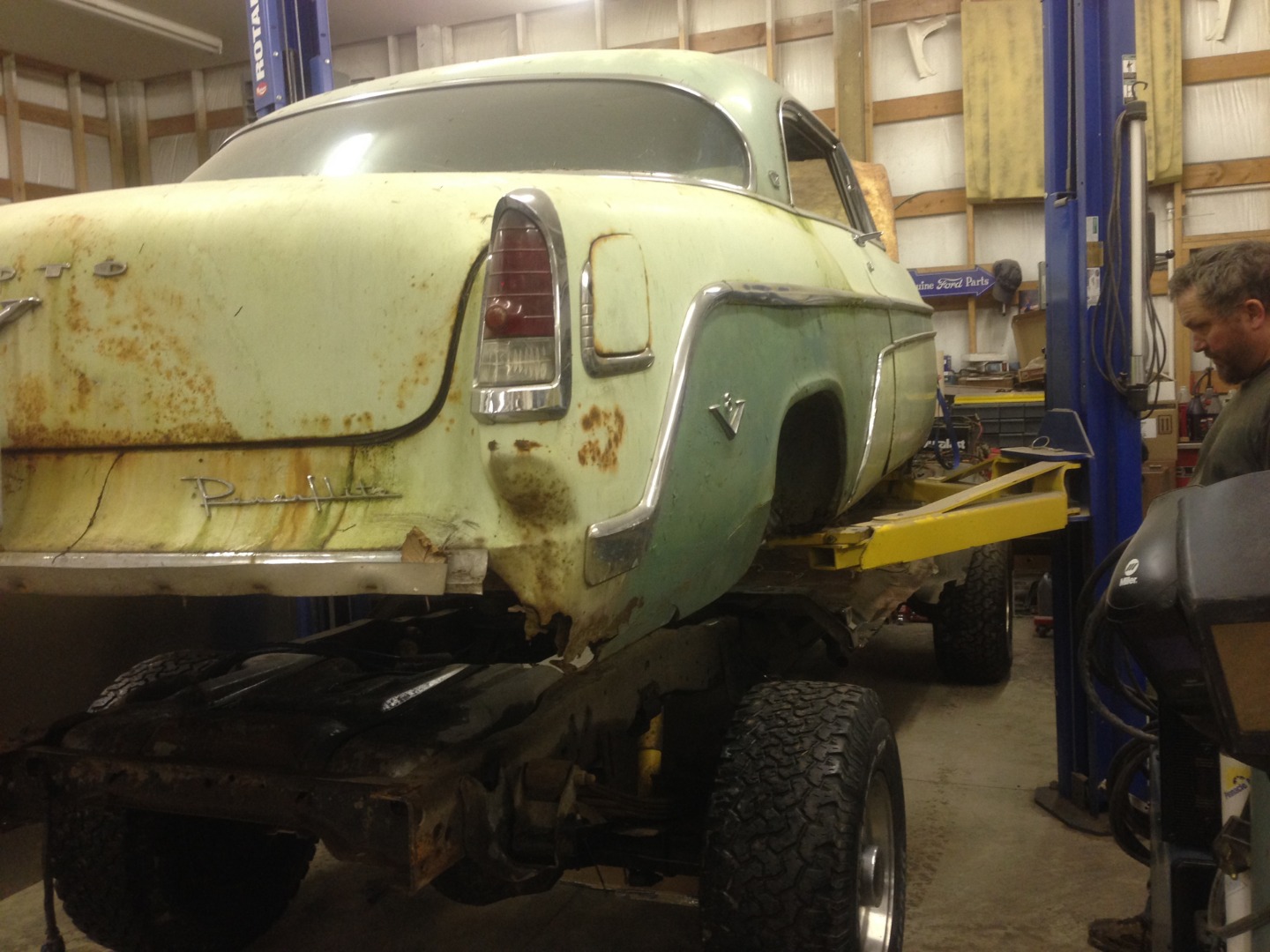
Using the stock Ford F-250 suspension allowed Dave to have a working four-wheel drive with a Sterling 10.25 rear axle and Dana 50 front TTB (twin-traction beam) setup. Although the truck originally came on 33-inch tires, Dave wanted to stuff a larger off-road tire under the Desoto body. This required modification of the Ford core support to fit the DeSoto fenders. In true Gambler fashion, Dave used an old DirecTV satellite dish in the fender well to shield the brake booster. Dave then began work to clearance the body for the larger tires.
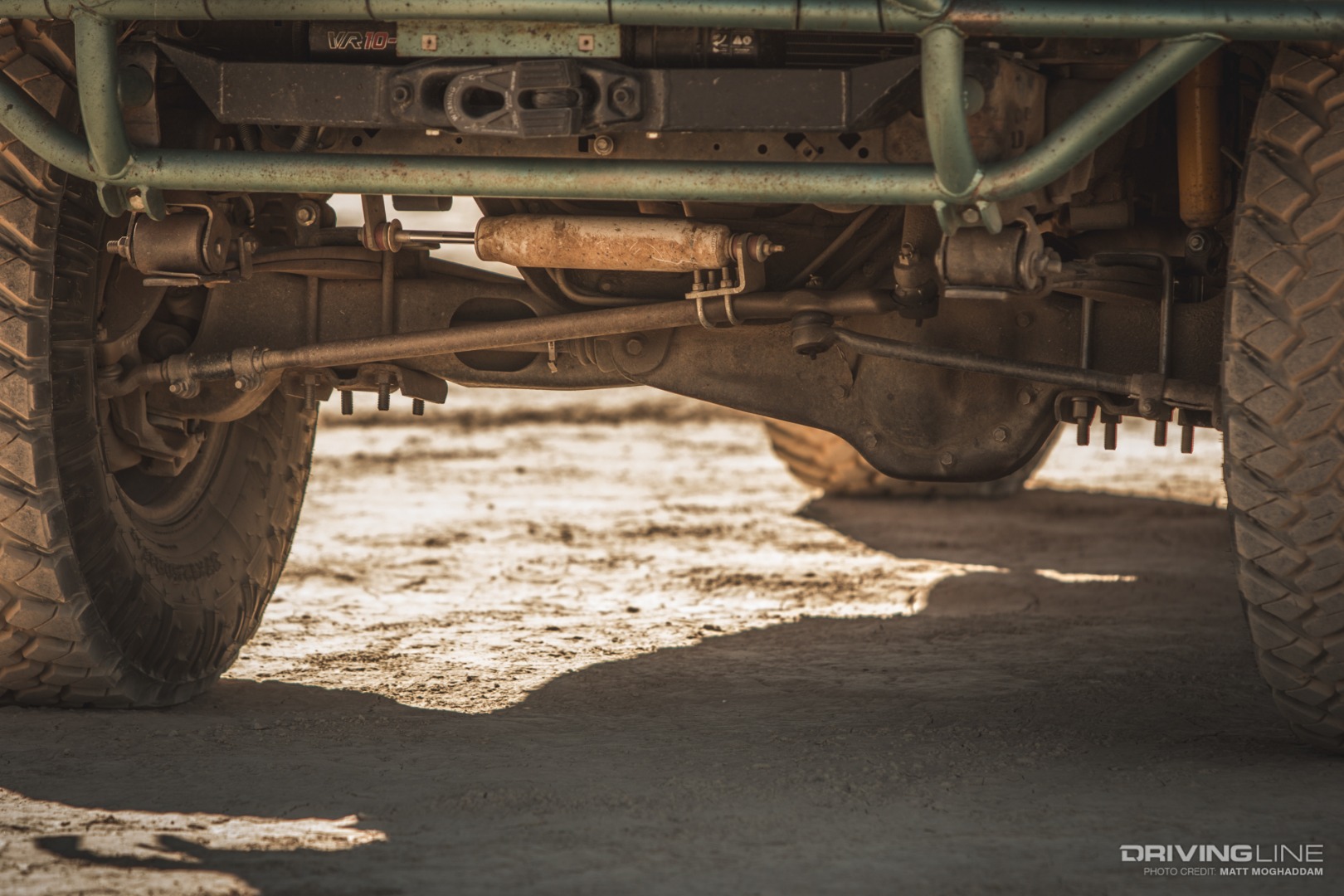
The Chupacabra is rolling on a set of 37x12.50x17 Nitto Trail Grapplers, on stock late-model Dodge wheels to retain the proper backspacing needed to stuff the tires in the fender wells. Dave takes pride in boasting that “Chupe” has been all over the West Coast of the US and Canada, on and off-road without issues on the Trail Grapplers, allowing for an easy transition from highway to dirt, mud, snow and sand. The 37-inch tires really act as an optical illusion with this car. While they look proportional to the Chupacabra’s large fender openings, the only way to get a sense of just how tall this car really sits is by standing right in front of it.
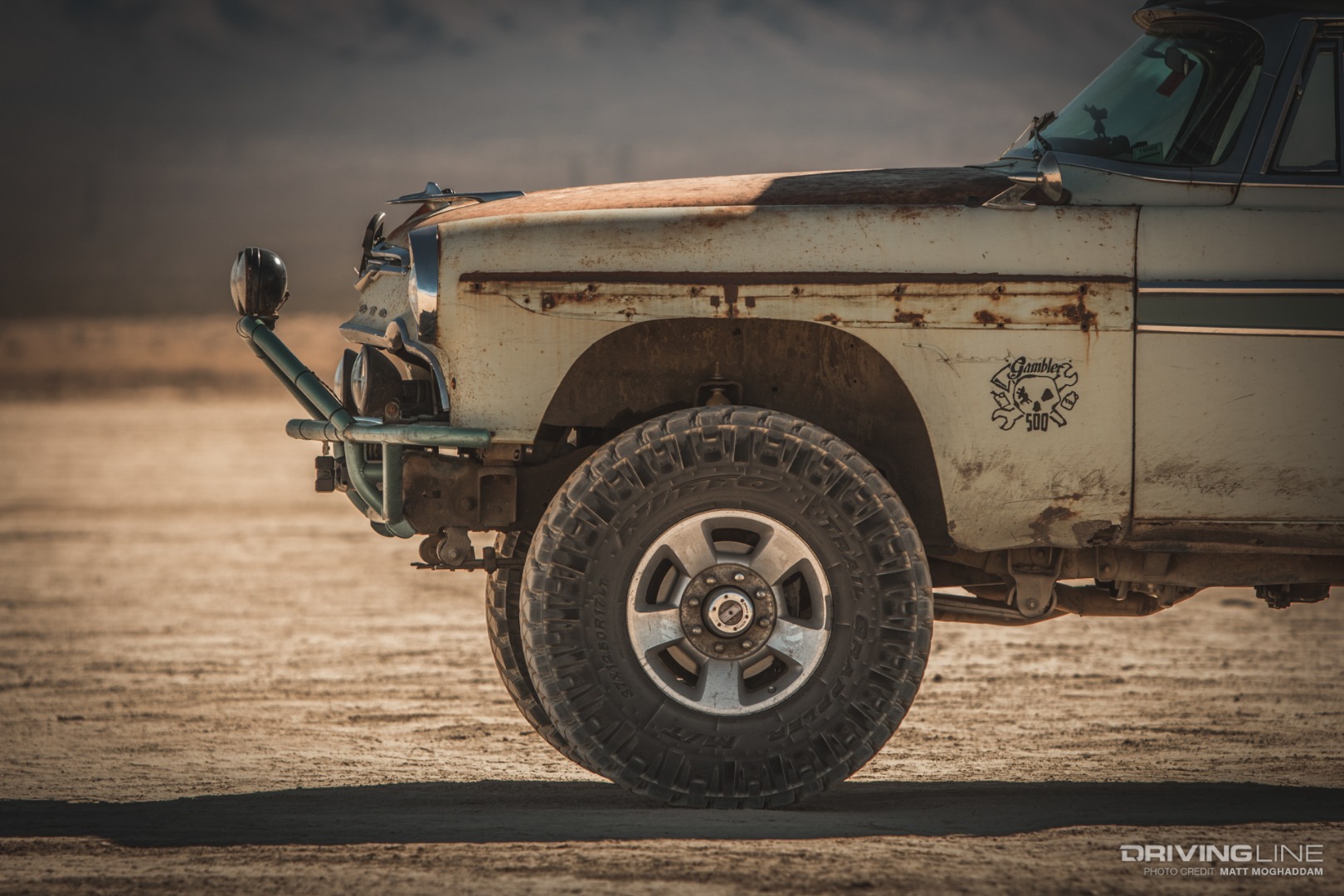
Dave finished the build off with a set of custom tube bumpers holding a spare tire and fuel can, a full roll cage inside the car and a roof rack built from the original ladder rack on the F-250, bolted to the roll cage. Dave later added a Tepui roof top tent and LED light bars to the rack. After five months of working nights and weekends on The Chupacabra, Dave finally called his creation finished. He has stated that before adding the roof top tent, winch and tires, he was only $2200 into the build, which certainly lends itself to the Gambler 500 style.

Since its completion, the DeSoto has completed several Gambler 500 rallies up and down the coast, and Dave plans on entering more, but he also thinks Chupe is too near and dear to his heart to beat up. Dave would like to do more adventure off-roading with it, perhaps down the Baja Peninsula as well.

The Chupacabra is very much like a mythical creature, except it’s real, and the few who have had a chance to see it up close can only tell tales of its mystique. It’s exactly the type of “Mad Max meets Doc Hudson” reckless manifestation that can only be conjured in the minds of those willing to dream beyond the physical limitations of a vehicle. Some might even call it four-dimensional thinking, the mashing of multiple vehicles separated by decades of automotive technology and styling, into one masterpiece that climbs its way to the top of our “I need that now” list without even breaking a sweat. Let the overland purists say what they will; there is no mistaking this seemingly derelict creation on the trail. We’ve found the beauty in this beast, right down to the ratchet strap holding the hood down and the gun rack sitting in the back window.
